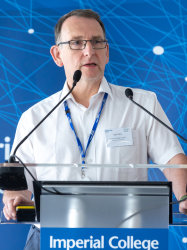BibTex format
@article{Singh:2016:10.1166/jbn.2016.2196,
author = {Singh, M and Harris-Birtill, DCC and Zhou, Y and Gallina, ME and Cass, A and Hanna, GB and Elson, DS},
doi = {10.1166/jbn.2016.2196},
journal = {Journal of Biomedical Nanotechnology},
pages = {481--490},
title = {Application of Gold Nanorods for Photothermal Therapy in Ex Vivo Human Oesophagogastric Adenocarcinoma},
url = {http://dx.doi.org/10.1166/jbn.2016.2196},
volume = {12},
year = {2016}
}

